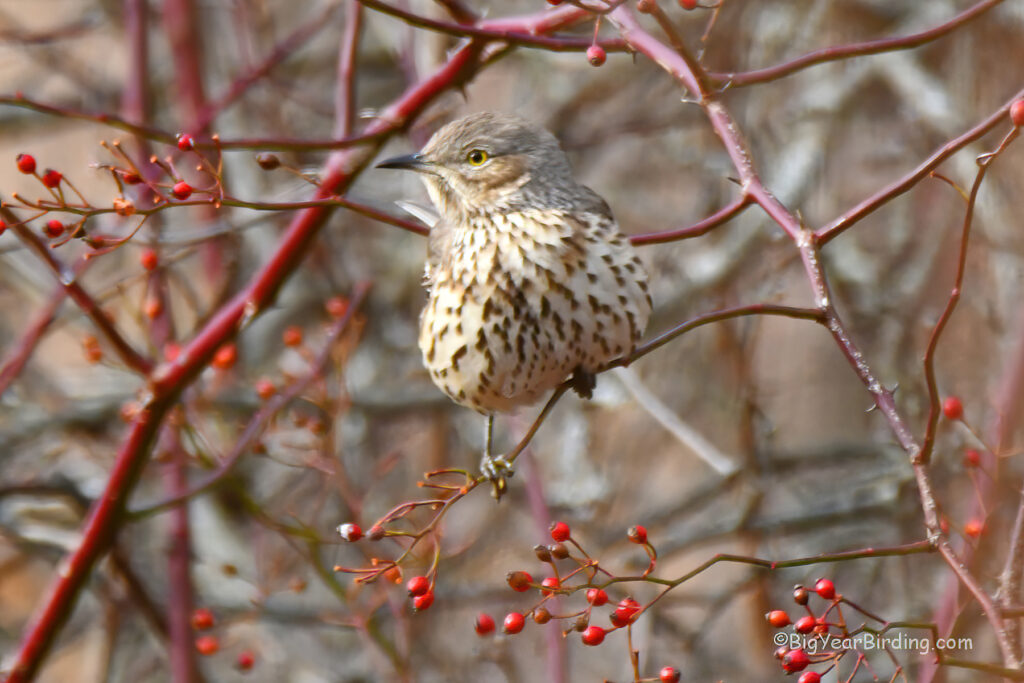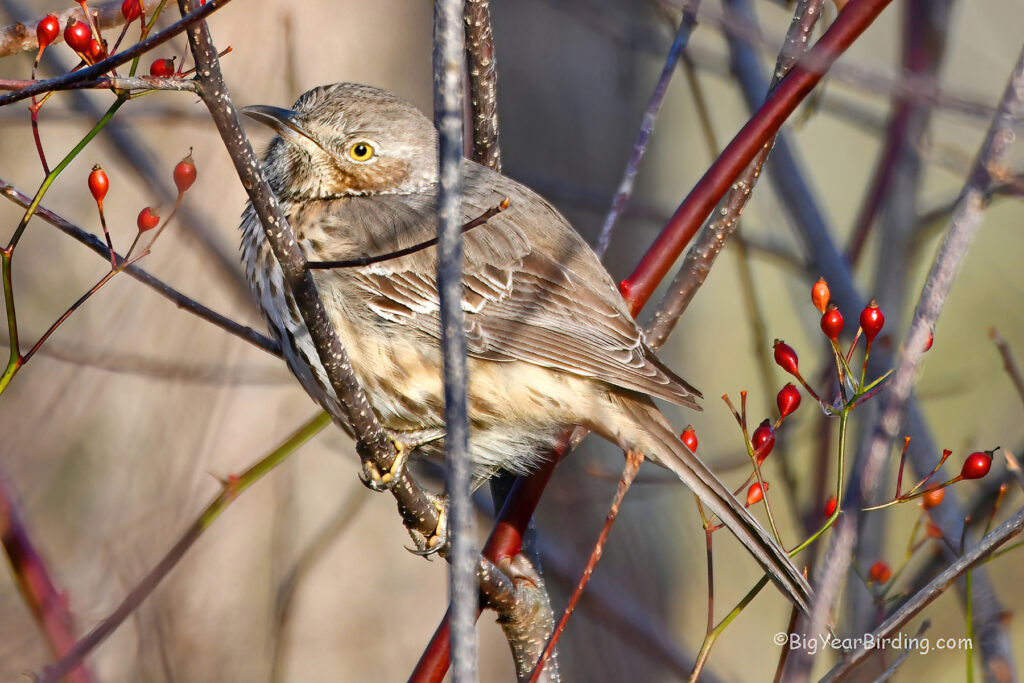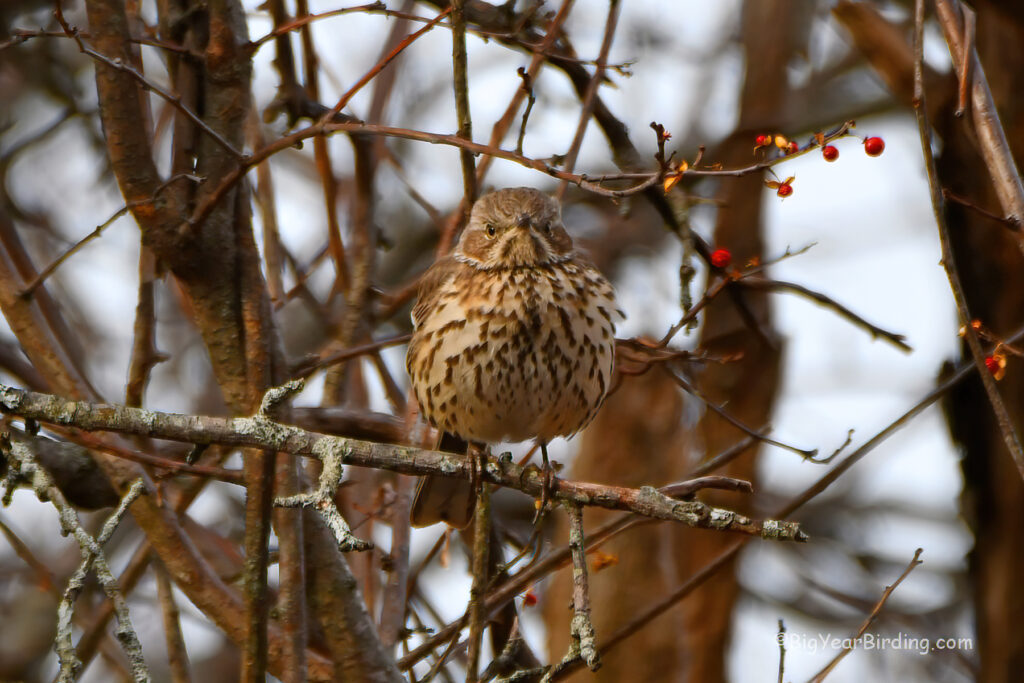
The Sage Thrasher (Oreoscoptes montanus) is a medium-sized songbird that can be found throughout the western United States and parts of Canada. It measures approximately 7.5-8 inches in length and weighs around 1.1-1.3 ounces. This thrasher has a long, slightly curved bill, a long tail, and a streaked brownish-gray plumage, with darker feathers on its wings and tail. Its underparts are paler than its upperparts, and its eyes are yellow.

One of the most distinguishing field marks of the Sage Thrasher is its long, thin tail, which it often flicks from side to side while perched or walking on the ground. Additionally, its streaked plumage and pale underparts make it easy to identify, particularly in its preferred sagebrush habitat. In flight, the Sage Thrasher’s wings appear long and pointed, with white patches visible on the outer edges.
The Sage Thrasher is a migratory bird, with populations in the northern parts of its range moving south for the winter. It breeds in the western United States from eastern Oregon and Washington down to southern California, Nevada, and Arizona, as well as in parts of Canada. During the winter months, it can be found in parts of the southwestern United States and northern Mexico.
The Sage Thrasher is primarily found in open sagebrush habitats, often near shrubs or other vegetation. It is a solitary bird, although it may be found in pairs or small groups during the breeding season. The Sage Thrasher’s diet consists mainly of insects, which it forages for on the ground, but it may also eat seeds and berries.

Despite being a relatively common species, the Sage Thrasher is facing some threats, primarily due to habitat loss and degradation caused by human activities, such as energy development and livestock grazing. Conservation efforts are underway to protect the Sage Thrasher’s habitat and ensure its survival for future generations.

